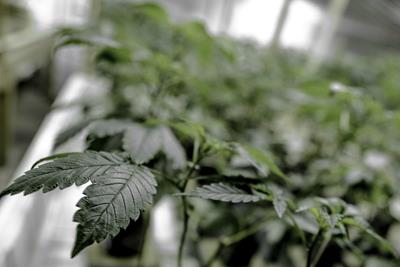
Tuesday September 24, 2019
 Growing
Growing
Hydroponics, aeroponics, and aquaponics are all water-based growing systems that take up less space and have fewer demands than soil grows. They all offer a fun and educational cannabis cultivation experience that many consider is superior to soil grows in many ways. Though similar, each grow system functions differently to provide a unique experience and top-shelf cannabis buds.
What is Hydroponics?
Hydroponics involves the cultivation of plants in water rather than soil. Roots are submerged in a nutrient-rich water bath which removes their need to “seek out” nutrients in the soil. Because of their direct access to nutrition, roots (and thereby the plant’s stems, leaves, and flowers) can grow up to four times faster compared their soil-grown counterparts. Additional benefits of hydroponic cannabis cultivation are the reduced space it requires, easier maintenance due to fewer pests and weeds, and superior water conservation compared to soil grows.

However, because roots are in direct contact with their nutrient source, even minor fluctuations or toxic nutrient levels can have an immediate impact on plant health. Hydroponic cultivation requires diligence and quick action to rectify any concerns with plant growth in addition to a sometimes costly setup (more expensive than throwing a seed into the ground, that is). Fortunately, with a little practice and patience, anyone can be a successful hydroponics gardener.
What is Aeroponics?
Aeroponics is very similar to hydroponics except that, instead of keeping plant roots partially submerged in water (which requires an air pump to maintain oxygen in the water), the roots are suspended in air while mists of nutrient-rich water keep them hydrated.
The concept of aeroponics is the same, as well – when nutrients have direct contact with the root system, they don’t need to expend as much energy seeking out a food source and can thereby exert their energy growing stems, leaves, and flowers.
Aeroponic cultivation also produces plants that are up to four times the size of soil-grown plants and takes up considerably less space, as well. However, because the roots only receive water when the system sprays, it is imperative that the misting system works continuously. If a power outage or other error occurs that prevents the misting system from functioning, the plants will have only a few hours before they show signs of stress. Aeroponic setups are recommended only when there is a back-up power source in place and when growers can monitor the system’s functionality and water level regularly.
What is Aquaponics?
Aquaponics is yet another cultivation method that used water instead of soil but has an extra component through which to add nutrients: fish waste. That’s right, aquaponics is a cultivation method that pumps fish water onto plant roots which then filter out the fish waste before returning the water to its fishy neighbors. It is a self-contained system that benefits plants, fish, and the environment as a whole by removing the need for any chemical fertilizers or pesticides. Fish produce healthy plants and plants provide a clean environment for the fish: win-win.
Aquaponics is completely self-sustaining. The only input needed in an aquaponics system is fish food and beneficial bacteria to convert fish waste (which is high in ammonia and toxic to plants) into fertilizer for plants. In fact, bacteria may be the most important part of an aquaponics setup since it is they who “eat” the waste so plants can digest it.

Bacteria only needs to be added once to the setup and if kept healthy, will reproduce quickly and begin the waste break-down process almost immediately. Heterotrophic and nitrifying bacteria should be added to the tank before the fish are added to give them time to set up shop and begin the waste break-down process. Though some grow supply stores sell beneficial bacteria in a little flask-like bottle, there is no need to purchase it. Simply toss a few dead prawns into the tank and wait for them to decompose (some say you can urinate in the water, too, but be careful – a little pee goes a long way!). An aquaponics testing kit should be used to determine when water is ready for fish and when plants are ready for water.
Soil cultivation is not the only way to grow. Cultivation methods like hydroponics, aeroponics, and aquaponics take up less space and produce more flower. They also require less attention and fewer resources and help ward against pest and weeds.
Have you ever grown cannabis using any of these methods? What was your experience like?
Photo Credit: Cannabis Reports (license)







